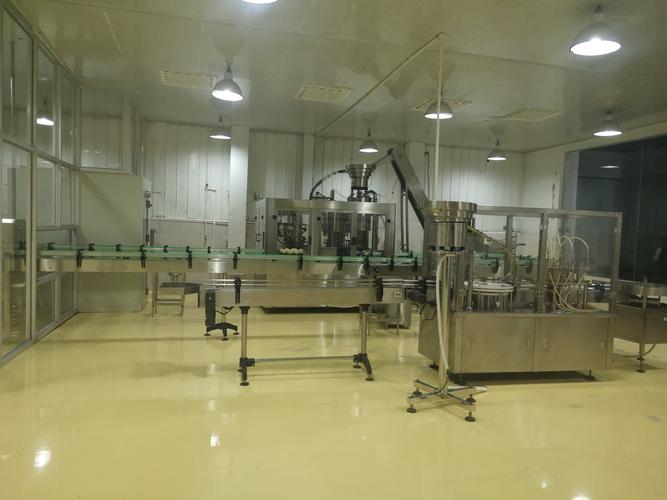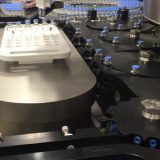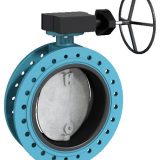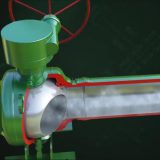Butterfly valves are widely used in many fields, such as petroleum, chemical, metallurgy, hydropower, and so on. Among the known butterfly valve skills, the sealing method mostly uses the sealing structure, and the sealing materials are rubber, PTFE, etc. Because of the constraints of structural characteristics, it is not suitable for high temperature, high pressure, corrosion, and wears resistance industries.

If a butterfly valve is needed for flow control, the first thing is to select the size and type of valve accurately. The structure principle of the butterfly valve is especially suitable for manufacturing large caliber valves. Common butterfly valves are clamp butterfly valves and flange butterfly valves. The clamp butterfly valve is connected between the two pipeline flanges by double-head bolts. The flange butterfly valve is connected with flanges on the valve. The flanges at both ends of the valve are connected with bolts on the pipeline flanges during the operation process.
An advanced sanitary butterfly valve is a metal hard-sealed butterfly valve. The body and seat are connected components. The outer layer of the seat seal is surfacing welded with heat-resistant and corrosion-resistant alloy materials. The multi-layer soft overlapping seal ring is fixed on the valve plate. Compared with the traditional butterfly valve, the butterfly valve has the advantages of high-temperature resistance, simple operation, and no conflict between opening and closing.
However, the butterfly valve in the process of operation still has the following questions:
a, because the multi-layer soft and hard overlapping seal ring is fixed on the valve plate when the valve plate is normally open, the medium forms a positive erosion on its sealing surface, and the soft sealing belt in the metal interlayer is eroded, which directly affects the sealing function.
b. Constrained by the construction conditions, the structure is not suitable for valves with diameters below DN200. The reason is that the overall structure of the valve plate is too thick and the flow resistance is large.
c. Because of the principle of three-Offset construction, the seal between the sealing surface of the valve plate and the seat is to press the valve plate to the seat by the moment of the transmission equipment.
The high function bidirectional hard sealing butterfly valve is characterized in that the seat seal ring is composed of multi-layer stainless steel sheets on both sides of the soft T-shaped sealing ring. The sealing surface of the valve plate and seat is oblique conical structure, and the material of heat-resistant and corrosion-resistant alloy surfaces on the oblique conical surface of the valve plate; the structure of the tension spring is fixed between the regulating ring pressure plate and the regulating bolt equipment on the regulating plate.
This structure effectively compensates for the elastic deformation of the service belt and stem between the Bush and the valve body under the medium pressure and solves the sealing problem of the valve in the process of two-way interchangeable medium transportation. Soft T-shaped multi-layer stainless steel sheets on both sides are selected to form a sealing ring, which has two advantages of metal hard seal and soft seal. It has zero leakage sealing function at low temperature and high temperature.
Applicable occasions
The butterfly valve is suitable for flow regulation. Because the pressure loss of the butterfly valve in the pipeline is relatively large, we should also consider the consolidation of the butterfly plate accepting the pressure of the pipeline medium when it is closed. In addition, it is necessary to consider the constraints of operating temperature on elastic seat data at high temperatures. The butterfly valve has a small construction length and overall height, fast opening and closing speed, and excellent fluid control characteristics. The butterfly valve’s construction principle is most suitable for manufacturing large caliber valves. When butt-welded butterfly valves are required for flow control, the most important thing is to select the size and type of butterfly valves accurately so that they can operate effectively.
Midline butterfly valve
Usually, in the medium of saving, conditioning, manipulation, and mud, the required structure length is short and the opening and closing speed are fast (1/4 turn). A low-pressure cut-off, butterfly valve is recommended.
Butterfly valves can be selected when there are two-position conditioning, shrinkage passage, low noise, cavitation and gasification, a few leakages to the atmosphere, and an abrasive medium.
When using butterfly valves under special working conditions, such as saving conditioning, strict sealing, severe wear, low temperature, etc., special designed metal seals with conditioning equipment should be used for special butterfly valves with three or double migraines.
Butterfly valves are suitable for freshwater, sewage, seawater, brine, steam, natural gas, food, medicine, oil products, various acids and alkalis, and other pipelines with complete sealing, zero leakage in gas experiments, high life requirement, and operating temperature ranging from – 10 degrees to 150 degrees.
Soft-sealed Pneumatic butterfly valves are suitable for two-way opening and closing and conditioning of ventilation and dust removal pipelines. They are widely used in gas pipelines and waterways of metallurgical, light industry, electric power, and petrochemical systems.
Metal-to-metal wire sealed double migratory butterfly valve is suitable for gas, oil, acid, and alkali pipelines such as urban heating, gas supply, water supply, etc., like conditioning and saving equipment.
Metal-to-metal surface sealed butterfly valves can be widely used in petroleum, petrochemical, chemical, metallurgical, power, and other fields besides being used as program control valves for large pressure swing adsorption (PSA) gas separation equipment. They are excellent substitutes for gate valves and globe valves.
For more information, please visit http://www.adamantvalves.com/




